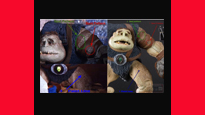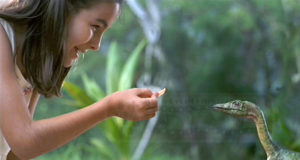
 As a caretaker of some amazing props from some well known films, I am often asked how I go about authenticating props, costumes, pop memorabilia, and collectibles. Some of these type of items are featured in the Movie Prop Collectors opening animation as well as our online museum. I also have been fortunate to have come in contact with original items via the multiple studios and conventions I attend each year and cover for other media outlets as well as this website. When I attend San Diego’s Comic Con each year many studios have original props, costumes, pop memorabilia, and art on display. Interviewing the artists at the con provides additional knowledge on the subject as well.
As a caretaker of some amazing props from some well known films, I am often asked how I go about authenticating props, costumes, pop memorabilia, and collectibles. Some of these type of items are featured in the Movie Prop Collectors opening animation as well as our online museum. I also have been fortunate to have come in contact with original items via the multiple studios and conventions I attend each year and cover for other media outlets as well as this website. When I attend San Diego’s Comic Con each year many studios have original props, costumes, pop memorabilia, and art on display. Interviewing the artists at the con provides additional knowledge on the subject as well.
While there is no perfect or only way to authenticate an original prop or costume, there are a few steps you can take to research whatever item you are interested in.
To start, here are some terms everyone should be aware of in regards to original props and costumes.
Original: The source or cause from which something arises. In regards to an original prop or costume, original would be associated with an item being created or acquired for, use in a film.
Made for Production: Similar to original, and sometimes misused in describing an items attribution to a film. Many times, things are made for a film and not used. Reasons vary, and can include the prop or costume having it’s design changed, being edited out of the final film, or any number of other reasons. So when made for production is used to described an item, always make sure you ask for clarification.
Screen Used: An item (prop or costume), that was used in the released film. A screen used prop or costume is generally more desirable than a non screen used item, as it was used on screen. Many times items can’t be screen matched (see below), but that does not mean that the item was not screen used. It is very difficult to screen match an item used in a film.
 Screen Matched: A definitive match to a prop, costume, or item used on screen. A pattern (such as paint, wood-grain, etc), scratch, or identifying one of a kind mark(s), sometimes can be attributed to the item used in a specific scene or scenes. Not easy to do, but possible, as I have done this in quite a few instances. Left is a screen match for a hero dinosaur from The Lost World: Jurassic Park that MoviePropCollectors owns.
Screen Matched: A definitive match to a prop, costume, or item used on screen. A pattern (such as paint, wood-grain, etc), scratch, or identifying one of a kind mark(s), sometimes can be attributed to the item used in a specific scene or scenes. Not easy to do, but possible, as I have done this in quite a few instances. Left is a screen match for a hero dinosaur from The Lost World: Jurassic Park that MoviePropCollectors owns. 
*See page 2 of this article for another screen matched example from Small Soldiers.
Replica: I am including this term only to differentiate between a replica prop or costume and an original one. Obviously a replica is a copy of an original item. A replica can be a nice alternative to acquiring original props and costumes when the cost is prohibitive or the original does not exist. Unfortunately sometimes unscrupulous people try to pass replicas as original so one has to be very careful.
Licensed, quality replica companies do exist. You can find many different licensed pop culture and entertainment related items from Funko, Mattel, Hasbro, Factory Entertainment, Mondo, Monsters In Motion, Entertainment Earth and many others.
When looking for, or being offered, an original item, the first thing to consider is the source. The source is one of the most important things to consider when looking to acquire an authentic item. In this case, an original prop or costume.
The main sources available for acquiring original props, costumes, and film artifacts are the film companies themselves, prop-masters or those that work in films, auction houses, after market dealers, and other collectors.
Auction houses such as Profiles in History, Sotheby’s, Christies ,as well as others, including Marvel Entertainment, who in 2012, held an amazing auction featuring hero, main items from their hit films, hold Hollywood memorabilia auctions a few times a year. Many movie studios, actors, prop-masters, and private individuals consign (offer) their items to the auction houses as well. An interested bidder should register at least 2 weeks ( 1 should be fine), before the auction providing information such as their name, address, and credit card for verification purposes. First time bidders usually will be charged a small fee for the catalog. Prospective bidders usually can find the catalog offered online at no cost. If a bidder wins an auction lot ( the item bid on), they usually will receive future auction catalogs from the auction house at no cost, unless they have a special auction, or you stop being a customer.
After market dealers, such as The Propstore of London and Screen Used deal with original film props and costumes, as well as replicas and crew gift items.
Private individuals also offer props and costumes between themselves and Ebay, though with Ebay there seems to be quite a bit of fraudulent items listed as original that are not. My advice on Ebay is to utilize extreme caution.
You can find other collectors and fans on forums such as MoviePropCollectors.com . Members have access to information about original props, costumes, and artifacts. As well as information about sellers, auctions, and events. Some forums, such as Movie Prop Collectors, have a live chat-room where fellow collectors and enthusiasts can get together, ask questions, share info, and talk shop.
